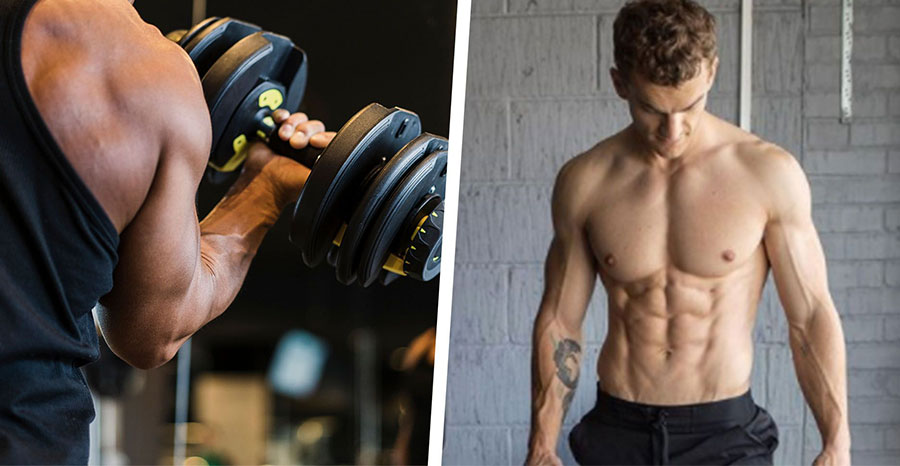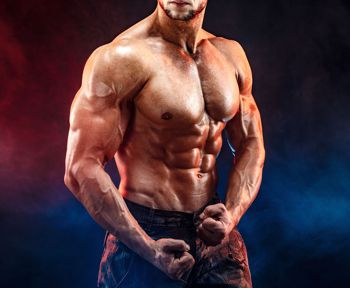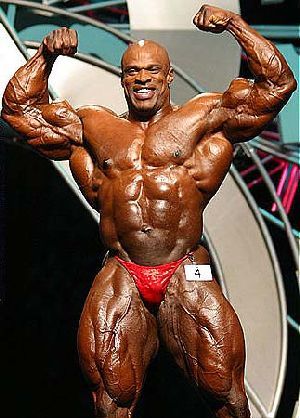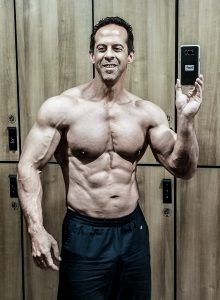
How to Gain Muscle and Lose Fat
How to Lose Fat and Gain Muscle at The Same Time? Build Muscle and Lose Fat
They’re called ‘mass mongers’. Those people, usually guys, for whom the body mass is happiness. The bigger they are, the better. We can’t really blame them, though. For many years, conventional wisdom in bodybuilding has been that you have to bulk up before you can cut. This led the traditional bodybuilders to gain muscle mass and cutting cycles. Usually, a six-month build muscle mass cycle, repeated twice per year, where 3 months would be dedicated to bulking, followed by 3 months of cutting. It works too, but there’s a problem. You only get to look good twice a year. The rest of the time, your hard-earned muscle growth is buried under the fat stores. These methods have also led to the belief that it is impossible to lose fat and gain muscle at the same time. As we’ll learn in this post, that belief is quite simply wrong. This guide will help you with understanding how to lose fat and gain muscle.
This Article Is Not For Powerlifters!
If you’re a powerlifter or any kind of strength athlete, chances are you’re not too concerned with how much body fat you’re carrying. A six-pack isn’t going to help you deadlift 400 kilos. I get you.
This post is not for you. Go eat a huge plate of spaghetti Bolognese and hit the gym for weight training! Come back next week.
This post is for those of us who are training not just for our health and fitness, but also so we can look great naked with losing body fat and building muscle tone. And why would we only want to do that twice a year?
The Dirty Secret of Pro Bodybuilding
We see pictures of ripped guys and gals on stage, showing off the incredible bodies they’ve built. Lest you think I’m about to criticize them, I’m going to do just the opposite.

The dietary and training discipline required to build a body like that goes way beyond what is demanded of most athletes. Anybody who has ever competed or gotten their body into that kind of shape can be justifiably proud of their achievement.
But How Long Did They Look Like That?
The answer will shock you. And I know what I’m about to tell you is true. Because, while I have never competed, I’ve done plenty of fitness modeling and I’ve gone through the exact same diet and training methods as competitive bodybuilders when preparing for a shoot.
Bodybuilders work very hard to achieve the results they get. The diet and training regimen are rigorous and highly disciplined. Unfortunately maintaining such very low levels of body fat long-term isn’t possible.
About 3 hours.
Yup. That’s it. You see, not only have these people had to eat an extremely restrictive (and quite frankly unhealthy) diet for fat loss as much as possible. But they also cut sodium and water intake in the days leading up to the competition in order to remove subcutaneous water.
You see them smiling on stage as they go through their posing routine, but inside they are screaming! They are dehydrated, their body needs water, are nutrient deficient, and are exhausted. During more than one shoot, I nearly passed out from holding a flex for just 15 seconds. I looked great. I was also on the verge of collapse.
Even Bodybuilders are Changing Their Methods
In the past 20 years, even the bodybuilding community has begun to move away from the old-school extreme fat loss and muscle gain cycles. In the old days, it wasn’t unusual for bodybuilders to hit 20% or higher body fat during a mass cycle.
There wasn’t too much focus on what they were eating – just how much. Diets of 8,000 calories per day were normal.

I remember reading an interview with bodybuilding legend Ronnie Coleman, where he said that he once ate raw cookie dough. Of course, hitting 20% in the off-season meant extremely cutting diets consisting of nothing but lean proteins and vegetables to prepare for competition.
No Higher Than 12%
Bodybuilders today are usually working to keep their body ratio of fat no higher than 12%, even during a bulking cycle. This means far less strain on the body when cutting for competition.
This especially applies to natural bodybuilders. There are steroids that can speed cutting and make it easier so bodybuilders who are using them can afford to go a little higher.
The legendary Ronnie Coleman. Keep in mind that he looked like this for about 3 hours. At his size, the water alone that he would have needed to drink after the competition could have easily added more than 5 kilos to his mass in the following 24 hours and would have robbed him of much of that impressive definition.
Natural bodybuilders have to think about how much work it’s going to be to remove the fat and also how much muscle they’re going to lose in the process. The longer the cutting cycle, the more fat, and muscle will be lost. Short-cutting cycles are best.
While there are natural methods for preserving muscle while cutting (see our post on protein formulas) it’s pretty much impossible to drop to 3% body fat without losing at least some lean muscle.
For various reasons, your body will tear apart its own muscle tissue while under an extreme calorie deficit. Gluconeogenesis for energy, and accessing the nine essential amino acids are two of the reasons your body will do this.
This re-absorption of the body’s muscle tissue is the reason why it’s impossible to walk around at 3% body fat year-round. You would have to stay on that very restrictive diet to do it. Not only would this eventually kill you, but you would be gradually losing muscle tissue.
So, What is Realistic to Gain Muscle While Burning Fat?
Forget the pics of pro bodybuilders and fitness models. The way they look is not sustainable – even for them.
The figure I’ve heard, and I believe it based upon my own experience, is that maintaining a body fat percentage below 5% would be impossible. And I can promise you doing that would require a perfect diet and training regimen.
Forget about having a life – or even a slice of chocolate cake. You’ll either be preparing your meals, working out, or resting, because the diet to maintain ultra-low body fat is very short of easy energy sources so you’ll be tired all the time.

Obviously, the answer to what is sustainable will be different for everyone, but as a general rule, I would say around 7–8 percent is realistic for most people. This assumes a high level of dietary discipline combined with effective training techniques.
Difficult? Yes! But not impossible. And you could still have a slice of chocolate cake every once in a while.
This is sustainable. This is my birthday selfie from this year (I’m 53). I’m around 8% body fat in this shot. I can stay this way year-round, be healthy, and still enjoy the occasional Black Russian.
Can We Lose Fat and Gain Muscle at the Same Time?
Now, we get to the point of this whole post because the answer to that question is a resounding ‘Yes’! The key is to stop thinking of calorie surpluses and deficits in time units of months, weeks, or even days and think in terms of hours.
As has been mentioned before, I have to be careful how I discuss nutrition. In Australia, you have to be a certified nutritionist or a doctor to give dietary advice. I am neither.
So, while I can’t tell you how you should eat and train to build and increase muscle while losing fat, I can tell you what I do. Take from it what you will.
How I Lose Fat and Gain Muscle At The Same Time
If you are trying to lose fat and gain muscle and you’re going to attempt to use my methods, a certain amount of flexibility is going to be required. The best way to lose fat that works for me on my schedule may simply not work for you.
Experimentation will be necessary to find the most effective “build muscle while losing fat simultaneously” plan that works for your body and your lifestyle to promote muscle growth.
However, the general principles I use will always apply if you are trying to build muscle and burn fat.
Will’s Diet and Training to Burn Fat and Build Muscle
Most people start their day with a cup of coffee. I do too, but only after I’ve had a serving of whey protein. For this reason, see my previous post on protein powders.
I hit the gym for weights first thing in the morning. I’m at the gym at 6 a.m. five mornings per week. While I change my workouts and gym equipment up every once in a while, I’m typically alternating a lower body and an upper body workout, working legs one day, and some combination of upper body muscle groups the next.
I take a shaker cup of weight gain formula with me which I drink while training, not after. If I’m really training hard and pursuing adding mass I’ll add a scoop of whey protein as well.
After my workout, which typically takes about an hour and consists mostly of supersets and breakdowns, I return home and have a big breakfast. My breakfasts will always include a protein combined with an energy source, such as whole oats, sugarless muesli, or even hash browns.
I drink low-calorie sugar-free almond or cashew milk and usually, I’ll add a small serving of fruit. Breakfast is by far my largest meal of the day.
Between the weight gain formula and a large breakfast, I’ve consumed around 60% of my calories for the day by the time I’m finished breakfast.
Read our blog, “Losing Fat vs. Losing Weight“.
Three Meals a Day is Just Wrong
Three meals a day doesn’t work. It creates time gaps of as long as 7 hours during which your body will go into starvation mode.
This is very bad (Read The Most Effective Fat Loss Method) because it means that when you do eat you’ll get an insulin spike and end up storing that food as fat. I eat multiple small meals throughout the day, with each meal becoming successively smaller than the one before.
I do take a serving of casein protein around 11 a.m. This is the point where my body will have digested the meat or egg proteins I had at breakfast. To be sure I’m not burning my own muscle tissue, I typically take 3 servings a day of casein.
If you’re looking to lose fat and gain muscle, you must preserve your muscle mass at all costs.
Around noon, I have lunch. I’m self-employed and work from home. So I don’t have to follow the same schedule as most people do, but I’m simply used to it, and noon is as good a time as any. Lunch is usually some leftover meat combined with a vegetable, often yams, green beans, or fresh peas.
Mid-afternoon I’ll have another serving of casein and a small snack. Often this will be a few scraps of lunch meat and some fresh fruit. I won’t eat again until dinner and that will be the last and smallest meal of my day.
Adjusting for Reality
Now for reality. I’ve got a wife and two teenagers. My wife and I take turns cooking for the family and of course, our dinners have to be more ‘traditional’. So I’m feeding my kids properly.
Considering that, like most teenagers, they’ll have eaten very little to that point in the day, preparing the kind of lean low-calorie meal that would be best for me is out of the question.
For this reason, I don’t worry too much about what I’m eating at dinner, but I do keep the portion very small – usually no more than a few hundred calories.
I do not eat after dinner! This is a major component of my lifestyle and my success in maintaining my body image goals. Snacking before bed is the worst thing you can do to your body. A very high percentage of the calories consumed at that late hour will be stored as fat.
About 3 days per week, I’ll go to the gym for cardio or a bodyweight workout with my wife after work, or in the evening after dinner. I personally don’t like to work out on weekends, so usually don’t, unless I miss an important workout during the week.
What You Should Take Away From All This
There are some very important points in my method.
First, I eat 5 or 6 ‘meals’ per day, not 3. Breakfast is my biggest meal, with each meal becoming successively smaller throughout the day.
This means my body is in a muscle-building (anabolic) state in the morning as a result of my workout and the extra calories I’ve eaten beyond what my body really needs. Because I taper off my calorie intake throughout the day, by mid-afternoon and carrying on into the evening.
I’m in a fat-burning state that will reduce body fat.
I’m not starving myself. Fasting is very bad for you and you should never go more than four hours without eating (except overnight of course). This causes your metabolism to drop and your body will begin to consume its own muscle tissue.
I don’t drink soda, fruit juice, or any kind of sugary drink. Instead, I use artificial sweeteners in my coffee (and if you’ve been told that artificial sweeteners cause cancer that is an outright lie told by the sugar industry. It’s well-documented. Google it or click here to watch a recent documentary detailing all the evidence.) Sugar, on the other hand, is toxic. I avoid it at all costs.
I don’t eat processed grains. This includes bread, granola bars, cookies, crackers, biscuits, and pasta. All processed grains have a high glycemic index and your body will store at least some of it as fat.
Sustainability
I followed the bulking/cutting cycle for the longest time, but when I hit 50, I found that I was getting very tired of putting my body through that. I was either stuffing myself and feeling bloated all the time, or starving and denying myself any of the foods I really like.
Finally, I decided to figure out a way to eat good while maintaining a good physique year-round. I was inspired in part by reading about the way that Australia’s own Hugh Jackman ate and trained for his role as Wolverine.
While I don’t recommend the daily starvation, those methods were the foundation for how I maintain a body I’m proud of year-round.
Will Dove
Latest posts by Will Dove (see all)
- Body Weight Training 2.0: Calisthenics - 22 Apr
- All About Protein Powders - 9 Apr
- Top 5 Fitness Trends for 2019 That You Should Try - 30 Mar




